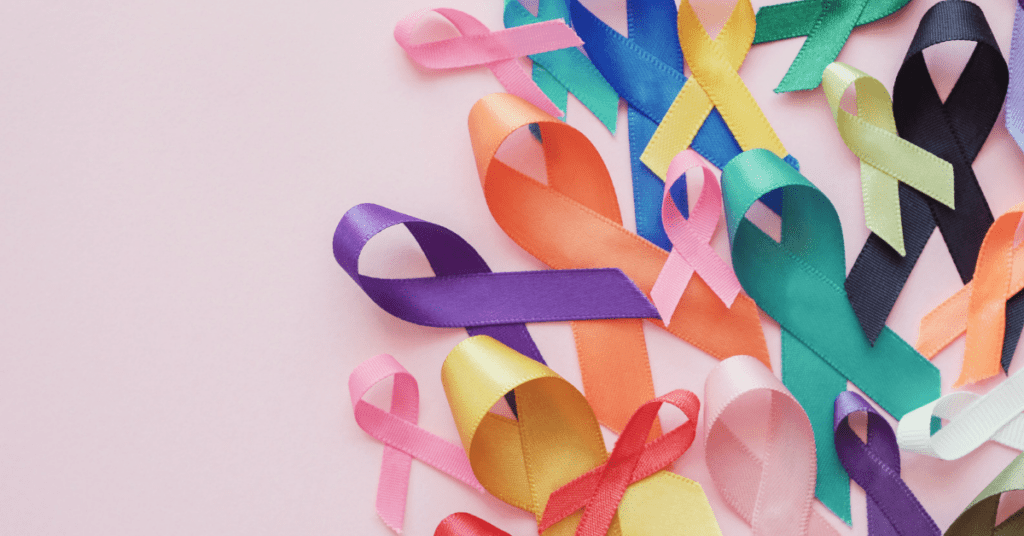You’ve been diagnosed with cancer. Now what? Even if your mind is reeling and you feel overwhelmed, your doctor will want to discuss your cancer therapy options and decide on a treatment plan as soon as possible.
Deciding what you want out of treatment can help you narrow down and determine the best options for you. Depending on your stage and cancer type, you might be prioritizing one of three things: a cure, control, or comfort.
Every individual is unique, so treatments may vary. Still, there are four main categories of cancer therapy that encompass the standard of care for the top diagnosed cancers. These include radiation, chemotherapy, immunotherapy, and alternative therapies.
1. Radiation Therapy
The American Cancer Society (ACS) reports that more than half of people diagnosed with cancer receive radiation therapy in some capacity. Generically, radiation is a treatment that uses high-energy beams to destroy cancer cells and shrink tumors. Radiation works because it causes small breaks in the DNA, slowing and even killing cancer cells. While this also damages healthy cells, most of them can recover.
Radiation therapy may be recommended for several reasons, including:
- Reducing or curing early-stage cancer
- Stopping cancer from spreading
- Treating cancer that has returned
- Helping to relieve symptoms from advanced cancer
There are two main types of radiation therapy: external beam radiation and internal radiation.
External Beam Radiation
Also referred to as teletherapy, this is the most common type when it comes to treating cancer. External beam radiation employs beams from a machine outside of the body that are directed to the patient’s cancer site.
Internal Radiation Therapy
Brachytherapy, or internal radiation therapy, is when capsules, seeds, or ribbons that contain a radiation source are placed into the patient’s body, typically in or near the tumor.
Alternatively, systemic radiation is another type of internal radiation therapy. It requires the individual to swallow a radioactive substance that travels throughout the body to find and kill the cancer cells.
2. Chemotherapy
Chemotherapy is a very common cancer treatment that involves administering anti-cancer drugs, sometimes used by themselves and sometimes partnered with radiation. In fact, Medical News Today estimates that 58% of eligible cancer patients receive chemotherapy alone, while 11% receive a combination of chemo and radiation therapy.
Chemotherapy is commonly given in one of two ways, or in some cases, a combination of the two:
- intravenously, through a vein, in a hospital
- orally, with tablets, in the comfort of your home
Both options require multiple treatment sessions, typically spread over a few months.
Chemotherapy drugs target the cells in the body that quickly grow and divide as cancer cells do. However, chemo cannot target specific areas, so it works throughout your body and can also affect fast-growing healthy cells. This indiscriminate impact causes some of the chemotherapy’s side effects, such as hair loss.
Still, chemotherapy can be the treatment of choice for several goals:
- To cure cancer completely.
- To help make other treatments more effective, such as before surgery or in conjunction with radiation.
- To help reduce the risk of cancer coming back after following surgery or radiation therapy.
- As a form of palliative care to help relieve symptoms if a cure is not possible.
3. Immunotherapy
Immunotherapy is a treatment that aims to improve the natural working of your immune system. It uses substances typically made by the body to boost your defenses and empower your immunity.
When it comes to cancer, the relevant immunotherapies are considered “non-specific” because they don’t specifically target cancer cells. But non-specific immunotherapies can help bolster the patient’s immune system while they undergo other cancer treatments such as chemotherapy or radiation. The two standard non-specific immunotherapies are:
Interferons
Interferons are proteins produced by your immune system to alert your body that a pathogen, usually a virus, should not be there. These interferons can help to slow the growth of cancer cells. If your body is not producing enough of these proteins naturally, they can be made in a laboratory and injected into your body as a form of immunotherapy. These shots are typically given three to five times a week over the course of several weeks or months. Common side effects can include skin rashes, thinning hair, increased risk of infection, and flu-like symptoms.
Interleukins
Interleukins are proteins in your body that help cells communicate to start an immune system response to invading pathogens or abnormal cells. As with other non-specific immunotherapies, interleukins do not attack cancer cells directly. Instead, this treatment involves giving the patient high doses of interleukins to enhance the abilities of specific white blood cells, called T cells, to target and kill the cancer cells on their own. Common side effects of this treatment can include flu-like symptoms, low blood pressure, and weight gain.
4. Alternative Therapy Treatments
While these treatments may not directly cure your cancer, they can help you cope with symptoms caused by the disease and other treatments. Alternative therapy can reduce anxiety, stress, fatigue, nausea, vomiting, and physical pain.
Discuss options with your doctor to determine the correct balance between traditional medicines and alternative treatments. While these treatments may help ease some of your symptoms, they are not usually powerful enough to replace cancer medicines or cure the disease independently.
Acupuncture
Acupuncture is the practice of having tiny needles inserted into your skin at precise points on the body to relieve specific symptoms. Studies show that this treatment can help relieve nausea, specific pains, and stress, as well as aid with sleep.
Hypnosis
Hypnosis is a deep state of concentration induced by a specialized therapist. It can help to reduce stress and anxiety, control pain, and prevent nausea.
Massage
Studies show that having a massage therapist work your skin, muscles, and tendons to relieve tension can promote stress relief and relaxation. Massage therapies can be light and gentle or deep with more intense pressure. Discuss with your doctor and massage therapist if your blood counts are low or if you have surgical scars, tumors, or radiation treatment areas to avoid.
Yoga
Yoga is a low aerobic form of exercise that combines stretching with deep breathing. There are several different types of yoga, so discuss with your doctor which is best for your needs. Yoga can provide stress relief as well as improve sleep and reduce fatigue.
Aynjil Insurance
At Aynjil, we have been personally affected by the devastating news of a cancer diagnosis and the stress, exhaustion, and difficulty of the treatments that follow. That’s why we set out to create an insurance product with heart. Designed to work in tandem with your current health insurance, Aynjil’s specialized cancer insurance is accessible, valuable, and affordable. We’ve packaged it in transparent terms and have made it easy to buy and claim online by removing the anxiety and simplifying the experience. Our insurance goes beyond mere medical care, encompassing true lifestyle support so you can focus on treatment and recovery.
Visit our website to see what we offer and how we can benefit you and your family during this time. Plus, you can sign up for our pre-launch offer by registering your interest and get 50% off your first three premiums.
Marketing by Joseph Studios



